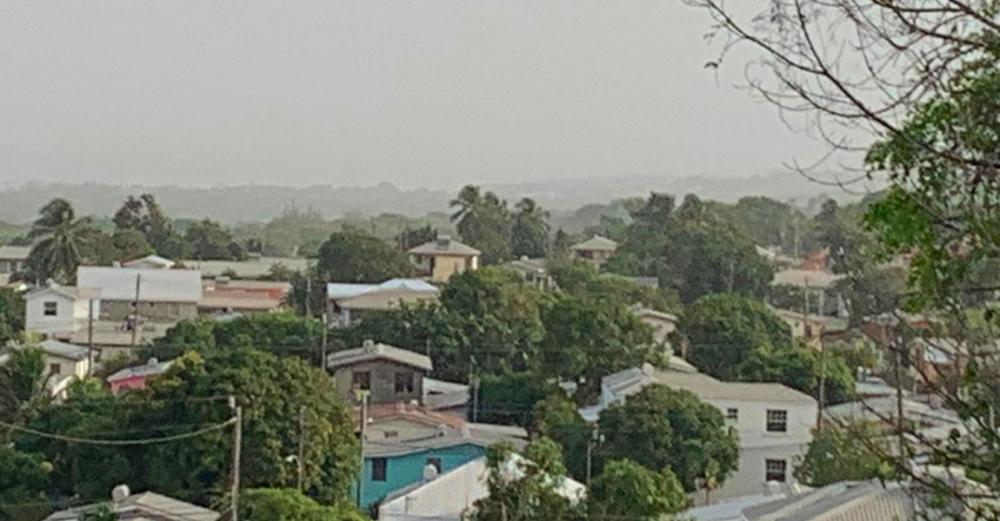Just Earth News | @justearthnews | 28 Jun 2020, 02:20 am Print

New York: A massive dust storm currently blanketing many parts of the Caribbean, posing a significant threat to regional health, has revealed the importance of having effective warning systems in place, the World Meteorological Office (WMO) said on Friday.
The storm arrived in the Eastern Caribbean from North Africa last week, affecting a wide area so far, spanning from the northern coast of South America to the Yucatan Peninsula in Mexico.
Daily life affected
“Sand and dust storms are severe hazards that can affect weather, climate, the environment, health, economies, transport and agriculture in many parts of the world”, said Dr. Oksana Tarasova, Head of WMO’s Atmospheric Environment Research Division.
“The ongoing dust storm, which has affected daily life in the Caribbean, shows the importance of forecast and warning services.”
‘Hazardous’ air quality levels
Although dust blows from Africa across the Atlantic every year, the UN weather agency said this year’s event has been particularly intense and extensive.
The dust storm has darkened skies, contaminated rainwater and greatly reduced visibility. It also poses a significant health hazard.
Countries such as Martinique, Guadeloupe and Puerto Rico have reported air quality levels in the “hazardous “category, with record values of PM10 – a particulate matter which can cause respiratory problems and disease.
Concentrations reported in Puerto Rico are at the highest level observed in the last 20 years.
Scientists at the University of Puerto Rico have also observed record high levels of aerosol optical thickness, or the measure of tiny solid or liquid particles in the air, such as dust, sea salt, or pollution from factories.
“This is a dust event of truly historic proportions”, said Professor Olga L. Mayol-Bracero at the University of Puerto Rico, and her counterpart, Dr. Andrea Sealy, meteorologist with the Caribbean Institute for Meteorology and Hydrology.
Natural and man-made causes
Sand and dust storms are common in arid and semi-arid regions of the world. They are usually caused by thunderstorms, which create strong winds that can transport large amounts of sand and dust thousands of kilometres away.
Every year, around 2,000 million tons of dust enters the Earth’s atmosphere, according to WMO. While much of this occurs naturally, a large part is due to poor water and land management.
WMO on Friday released the latest edition of its annual Airborne Dust Bulletin which found that mineral dust concentrations last year generally were similar to 2018 levels.
Through its Sand and Dust Storm – Warning Advisory and Assessment System (SDS-WAS), the UN agency provides operational forecasting aimed at reducing impacts on the environment, health and economies.
It has regional centres providing forecasts for Asia, Northern Africa, the Middle East, Europe and the Americas.
- Catastrophe alert: UN warns Asia is facing unprecedented cyclones and rainfall
- Catastrophe alert: UN warns Asia is facing unprecedented cyclones and rainfall
- India’s West Coast Turns Protector: Whale Shark Rescues Surge from Gujarat to Kerala
- Belém COP30 announces major climate finance boost
- Three dead after magnitude 5.7 earthquake hits Bangladesh, strong tremors felt in Kolkata



-1763561110.jpg)


